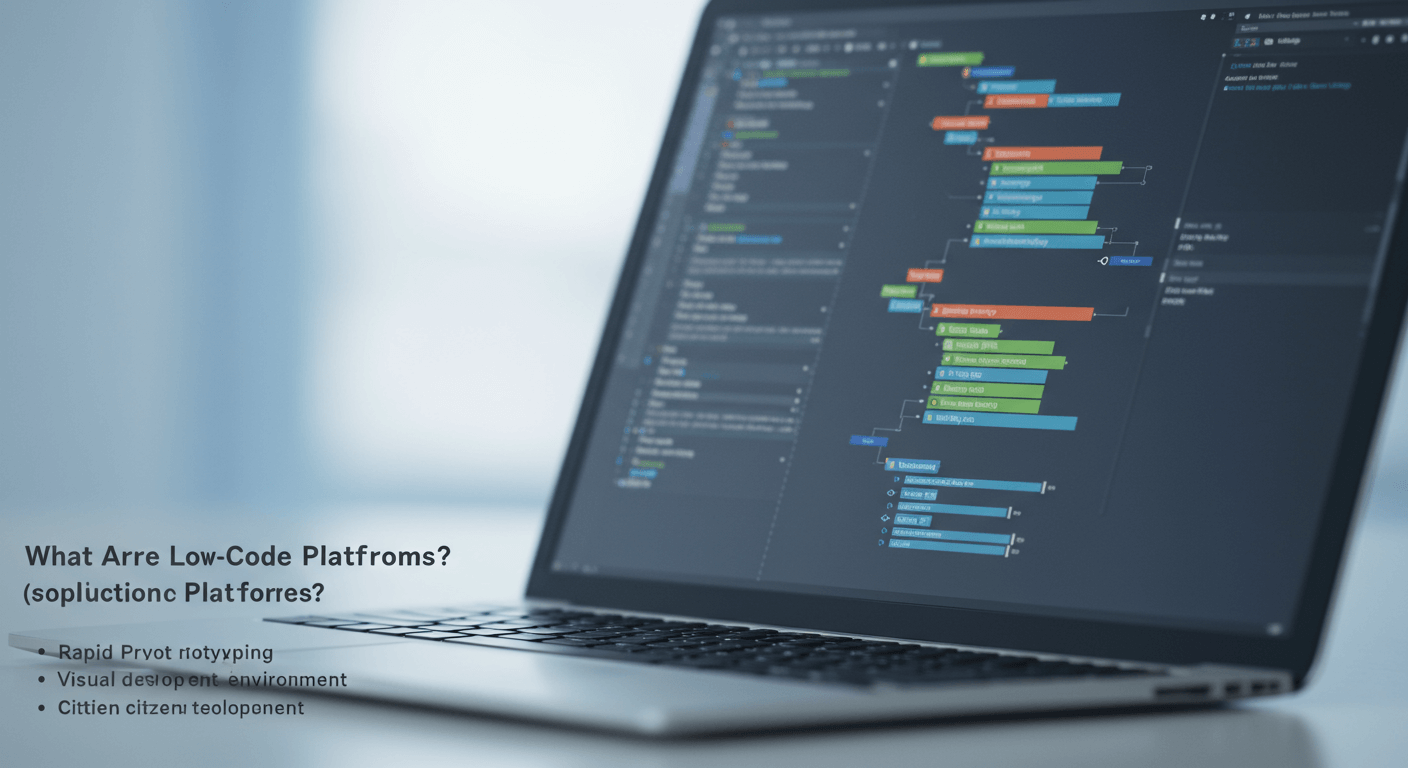In the fast-paced world of software development, speed and adaptability have become critical differentiators. Traditional coding approaches often struggle to keep up with market demands for new features and rapid iterations. Enter low-code platforms, tools designed to accelerate delivery by minimizing the amount of hand-written code developers must write and maintain. In 2024, low-code adoption continues to surge as enterprises strive to empower citizen developers, reduce backlog pressure, and deliver business value faster than ever. This article explores what low-code platforms are, their benefits and challenges, best practices for adoption, and what the future holds for this transformative approach.
What Are Low-Code Platforms?

Low-code platforms provide visual development environments where users can drag and drop components, model data, and define application logic through graphical interfaces. Unlike traditional integrated development environments (IDEs) that rely heavily on manual coding, low-code solutions abstract common patterns—such as database integration, user authentication, and UI layout—into reusable building blocks. Developers and non-technical stakeholders alike can contribute to application creation, bridging the gap between business requirements and IT execution. In 2025, leading low-code platforms support integrations with AI services, microservices architectures, and DevOps pipelines, making them a powerful addition to any organization’s toolkit.
Key Benefits of Low-Code Platforms
1. Rapid Time to Market
By leveraging prebuilt components and visual workflows, teams can prototype, iterate, and deploy applications in days or weeks instead of months. This speed is invaluable in competitive industries where customer expectations and regulations evolve constantly. Low-code platforms eliminate boilerplate coding tasks and streamline approvals through built-in governance features, enabling faster stakeholder feedback and continuous delivery.
2. Reduced Development Costs
With less hand-coding required, organizations can reallocate senior developer hours to more complex problems, reduce contractor reliance, and lower overall project expenses. Citizen developers—employees with domain expertise but limited programming skills—can build internal tools and dashboards, cutting down on helpdesk requests and freeing IT teams to focus on strategic initiatives.
3. Enhanced Collaboration
Low-code environments foster cross-functional teamwork by providing a visual language both business users and IT professionals understand. Requirements can be captured directly in the tool, reducing miscommunication and scope creep. Real-time feedback loops within the platform ensure alignment through every development phase, from design to deployment.
4. Democratization of Innovation
By empowering non-technical staff to create applications, companies unlock new sources of innovation. Sales, marketing, and operations teams can develop tailored solutions for lead tracking, campaign management, or inventory control without waiting for IT backlogs to clear. This democratization accelerates digital transformation and fosters a culture of continuous improvement.
5. Seamless Integration
Modern low-code platforms offer connectors for popular enterprise systems, databases, and cloud services. Whether integrating with Salesforce, Microsoft Dynamics, AWS, or custom APIs, teams can build end-to-end workflows that span multiple systems. This connectivity ensures that new applications fit into existing IT landscapes without extensive custom integration work.
Common Challenges & How to Address Them
1. Vendor Lock-In
Relying heavily on platform-specific components can make migrating to another solution difficult. To mitigate this risk, evaluate platforms that produce standards-compliant code or export your application logic. Maintain documentation of business rules and data models outside the tool to facilitate future transitions.
2. Customization Limits
While low-code excels at common use cases, highly specialized functionality may require custom code. Choose platforms that support extensibility via plugins or custom scripts. Establish clear guidelines for when to extend the tool with code versus when to build separate microservices or modules using traditional development practices.
3. Security & Compliance
Applications built on low-code platforms still handle sensitive data and must comply with industry regulations. Ensure your chosen platform provides robust security controls, role-based access, audit logs, and encryption features. Conduct regular security assessments and integrate the platform into your organization’s broader governance framework.
4. Governance & Shadow IT
As citizen development grows, fragmentation and unmanaged apps can create shadow IT risks. Implement a governance model that defines who can build, review, and deploy applications. Use analytics dashboards within the platform to monitor usage, performance, and compliance, ensuring visibility and control across the development ecosystem.
Best Practices for Adopting Low-Code Platforms
1. Evaluate Use Cases Carefully
Start with projects that have clear requirements, limited complexity, and measurable ROI—such as internal dashboards, workflow automation, or simple customer portals. Piloting low-code on these use cases helps teams learn the platform’s strengths and limits before scaling to mission-critical systems.
2. Establish Strong Governance
Define roles, permissions, and approval workflows upfront. Create review boards or centers of excellence to oversee best practices, coding standards, and security policies. A well-structured governance model ensures that applications remain maintainable, secure, and aligned with enterprise architecture guidelines.
3. Invest in Training & Support
Equip both developers and citizen developers with structured training programs. Encourage knowledge-sharing through internal workshops, documentation libraries, and community forums. Providing ongoing support accelerates adoption and reduces the risk of improperly designed applications.
4. Integrate with DevOps Pipelines
To achieve continuous delivery and consistent quality, integrate your low-code platform into existing DevOps workflows. Leverage version control, automated testing, and CI/CD tools to manage releases. This approach brings the benefits of agile development to low-code projects and promotes collaboration between IT and operations teams.
Future Outlook

As AI-driven code generation and generative design capabilities mature, we can expect low-code platforms to become even more powerful. AI assistants embedded within these tools will recommend components, optimize workflows, and even write code snippets on behalf of developers. Additionally, it’s likely that low-code solutions will deepen their integration with microservices architectures and edge computing platforms, enabling organizations to build complex, scalable systems without sacrificing the speed and agility that low-code promises.
Conclusion
Low-code platforms have evolved from niche tools into strategic enablers of digital transformation. By accelerating time to market, reducing costs, and democratizing app development, they help organizations respond swiftly to changing market demands. However, realizing their full potential requires careful planning around governance, security, and integration. In 2025 and beyond, low-code will be a key pillar in a balanced software delivery approach—one that blends visual development with traditional coding to achieve both speed and sophistication.








